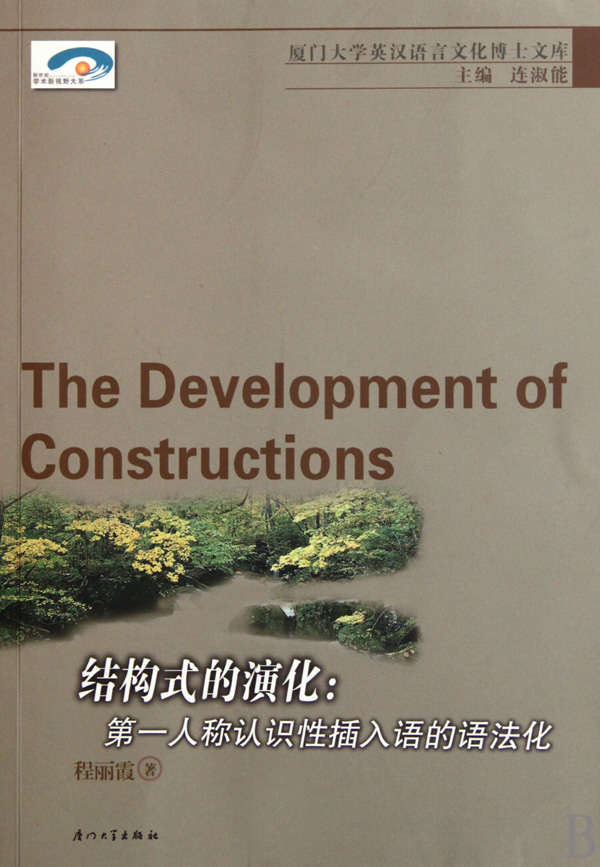在現代漢語中,插入語屬於獨立語,其作用是句子表意嚴密化,補足句意,包括說話者對話語的態度,或引起聽話者的注意。
在一個句子中間插入一個成分,它不作句子的何種成分,也不和句子的何種成分發生結構關係,同時既不起連線作用,也不表示語氣,這個成分稱之插入語。
基本介紹
- 中文名:插入語
- 隸屬:獨立語
- 作用:句子表意嚴密化
- 特色:既不起連線作用,也不表示語氣
漢語,概括,語法功能,英語,定義,作用,類型,使用,出現形式,
漢語
概括
插入語與稱呼語、感嘆語、擬聲語共稱為獨立語。
語法功能
1,有的插入語表示肯定或強調的口氣,表明說話者那種不容置疑的態度,有事又點名特別值得注意的內容,以加深聽話者的印象。通常用“毫無疑問”“不可否認”“不用說”“十分明顯”“尤其是”“主要是”“特別是”等。
例如:
十分明顯,不大大提高中華民族的科學文化水平,實現現代化就是一句空話。
2,有的表示對情況的推測和估計,口氣比較委婉對所說事情的真實性不作完全的肯定,留有重新考慮的餘地。通常用“看來、看樣子、說不定 、算起來、我想、充其量、少說一點”
例如:
我看這就是人們為什麼把雪稱為瑞雪的道理吧。
3,有時候為了表示訊息來源會使用“聽說,據說”一類的字眼。
例如:
據說,最美好的城市應該在山與湖之間。
4,有時說話者希望聽話一方接受自己的建議又不願用一種強調的語氣就會用“請看、你想、你瞧、你說”一類的字眼來引起對方的注視。
例如:
你瞧,西面山溝里那一片柿子樹,紅得多么好看。
5,如果是客觀敘述一件事,也會用一定的詞語來表示突出某一點,
例如:虎姑娘一向,他曉得,不這樣打扮。
6,有的表示總括性的的意思,點名下文,是對上文歸總而來的結論,或者指出由此及彼說明另外的事情,這種詞語有承上啟下的作用,能使上下文更好地連線起來。
例如:
總之,提高學生讀寫能力是中學語文教師教學的目的所在。
7,還有一些是表示注釋、補充舉例的,通常用“也就是、包括、正如“等來表示。
例如:
他呀,不客氣地說,一輩子都不會有出息。
英語
定義
chārùyǔ
[parenthesis]
在一個句子中間插入一個成分,它不作句子的何種成分,也不和句子的何種成分發生結構關係,同時既不起連線作用,也不表示語氣,這個成分稱之插入語。
如“這堆砂土,充其量有十輛卡車就運去了”“我家後面有一個很大的園子,相傳叫做百草園”中的“充其量”和“相傳”即是插入語。
作用
插入語一般對一句話作一些附加的說明。它是中學英語語法的重點,也是高考的考點。通常與句中其它部分沒有語法上的聯繫,將它刪掉之後,句子結構仍然完整。插入語在句中有時是對一句話的一些附加解釋、說明或總結;有時表達說話者的態度和看法;有時起強調的作用;有時是為了引起對方的注意;還可以起轉移話題或說明事由的作用;也可以承上啟下,使句子銜接得更緊密一些。
類型
掌握這一語言現象不僅有利於對英語句子等的理解,還有利於提高寫作等的水平。插入語的類型較多,常見的如下幾種:
形容詞(短語)做插入語
能用作插入語的形容詞(短語)常見的有:true,wonderful,excellent,strange to say,most important of all, sure enough等。 如: True,it would be too bad. 真的,太糟了。 Wonderful,we have won again. 太好了,我們又贏了。 Strange to say,he hasn’t got my letter up to now. 說來也奇怪,他到現在還沒有收到我的信。 Most important of all,we must learn all the skills. 最重要的是,我們必須掌握所有的技巧。
副詞(短語)做插入語
能用作插入語的副詞(短語)有:indeed,surely,still,otherwise,certainly,however,generally, personally,honestly,fortunately,luckily,though,besides,exactly,perhaps,maybe,probably,frankly,or rather等。 如: When he got there,he found,however,that the weather was too bad. 可是到了那兒之後他發現,那兒的天氣太壞了。 Otherwise,he would still be at home. 不然的話,他還會在家的。
介詞(短語)做插入語
能用作插入語的介詞短語有:in fact,in one’s opinion,in general,in a word,in other words,in a few words,of course,by the way,as a result,for example,on the contrary,on the other hand,to one’s surprise,in short,as a matter of fact,in conclusion,in brief等。 如: You can’t wait anymore-in other words,you should start at once. 你不能再等了——換言之,你得立即出發。 On the contrary,we should strengthen our cooperation with them. 相反,我們應該加強和他們的合作。
V-ing(短語)做插入語
能用作插入語的V-ing(短語)常見的有:generally speaking,strictly speaking,judging from by,talking of, considering等。 如: Generally speaking,the weather there is neither too cold in winter nor too hot in summer. 一般來說,那兒的氣候冬天不太冷,夏天不太熱。 Judging by his clothes,he may be an artist. 從衣著來判斷,他可能是個藝術家。
不定式(短語)做插入語
能用作插入語的不定式短語有:to be frank,to be honest,to be sure,to tell you the truth,to make matters worse,to sum up,to start with,to begin with等。 如: To be frank,I don’t quite agree with you. 坦率地說,我不太同意你的意見。 To tell you the truth,I’m not so interested in the matter. 跟你說實話,我對這件事情的興趣不大。 To sum up,success results from hard work. 總而言之,成功是艱苦努力的結果。
句子(陳述句和一般疑問句)做插入語
能用作插入語的句子有:I am sure,I believe,I think,I know,I suppose,I hope,I’m afraid,you see, what’s more,that is to say,as we know,as I see,believe it or not等。 如: Some animals only half-hibernate,that is to say,their sleep is not such a deep one. 有些動物只是半冬眠,就是說,它們的睡眠並不是深度睡眠。 I believe,China will catch up with the developed countries sooner or later. 我確信,中國遲早會趕上已開發國家。 He can’t pass the exam,because he doesn’t study hard. What’s more,he isn’t so clever. 他不能通過這次考試,因為他學習不認真,更何況他又不太聰明。
使用
插入語(句)是說話者對所表達意思的補充、強調、解釋或者說話的態度,其位置靈活,常常用逗號或破折號與其他成分隔開,並且在語法上不影響其他成分。例如:
I think, she has no feeling for your trouble. / She, I think, has no feeling for your trouble. 我想,她對你的遭遇無動於衷。
出現形式
1. 插入語常以副詞(副詞短語)、形容詞(形容詞短語)、介詞短語、非謂語動詞短語等形式出現。
( 1 )常見的副詞及短語: indeed, surely, however, obviously, frankly, naturally, luckily / happily for sb. certainly 等。
( 2 )常見的形容詞及短語: funny, needless to say (不用說), most important of all 等。
( 3 )常見的介詞短語: by the way, in a few words / in sum / in short (簡而言之), in other words, in general, in one's opinion / judgment (按照某人的意見), in fact, in the first place, of course, to one's knowledge / surprise / regret /satisfaction / mind / joy / disappointment 等。
( 4 )常見的現在分詞短語: strictly / generally / honestly / personally / exactly / physically / speaking (嚴格地 / 一般地 / 坦誠地等)說; judging from / by …(根據……判斷)等。
( 5 )常見的動詞不定式短語: to be sure (無疑地), to sum up (概括地說), to tell the truth, to be honest, to be short, to conclude, to put it briefly, to put it in another way, to begin ( start ) with 等。
注意:上述單詞或短語作插入語和狀語時的區別。例如:
( 1 ) Frankly, he'd like to listen to music.
(副詞作插入語,表示說話人的態度)
Here you should speak frankly.
(副詞作狀語)
( 2 ) True, your daughter is at home now. (形容詞作插入語)
He came back, hungry and tired. (形容詞作狀語)
( 3 ) Judging from what he said, he does look down his elder brother. (現在分詞作插入語,其主語不是句中的主語,只是說話者的附加說明)
Seeing from the window, he can see the lake. (現在分詞作狀語,邏輯主語是句中的主語 he )
( 4 ) To tell you the truth, he doesn't quite agree with this idea. (不定式作插入語,動作主體不是句中的主語,只是說話者的附加說明)
To buy the machine, he went to Beijing. (不定式作目的狀語,邏輯主語是句中的主語 he )
2. 插入句為簡短的、具有完整意義的句子。常見的插入句如下: I think / hope / guess / know / believe / suppose, I am sure (我可以肯定地說), that is ( to say )(也就是說), it seems (看來是), as I see it (照我看來), what's more, what's worse, what is important / serious (重要 / 嚴重的是), I'm afraid (恐怕) , it is said (據說), as we all know (眾所周知)等。
( 1 ) What should I do first?
What do you think I should do first? (被插入的疑問句原來為倒裝語序,插入後成為陳述語序)
( 2 ) Who is singing?
Who do you think is singing? (被插入的疑問句原來就是陳述語序,不需要做調整)

